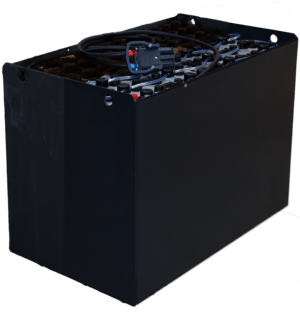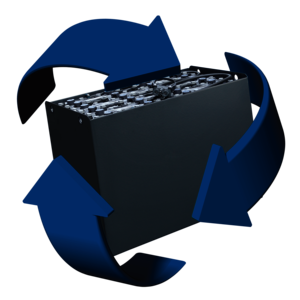A second life for batteries and chargers
Reprocessing as part of production
Triathlon thinks sustainably! Therefore, when we receive used lead-acid batteries, we check within the framework of a structured process whether reconditioning is possible and economically viable. Thanks to our professional and efficient testing and reconditioning steps, we are able to prepare batteries that are already in use for use in their so-called "second life" in the style of series production.
In an innovative process that is unique on the market, our specialist personnel precisely test the remaining performance of the central battery components, first and foremost the cells. Those that can no longer meet the requirements of "2nd Life" use are replaced. Other components such as connectors or terminal screws are also either replaced or reworked - and the trough can also be refurbished if necessary.
In addition to reconditioning Lead-Acid batteries, we also give used chargers a second purpose. In this way, we avoid waste, preserve natural, valuable resources and create perfectly functioning used batteries. Through this conscientious form of recycling, we achieve the highest level of recycling possible within the life cycle of a battery.

The inspection
Central inspection steps of the used products
on site in our own production
- Determination of the year of manufacture – Batteries and chargers older than 10 years are only considered for reconditioning in justified exceptional cases.
- Visual inspection for external damage – Inspection of potential mechanical damage to cells, trough, connectors, aquastops or charging cables.
- Visual inspection for signs of wear – Evaluation of pole screws, tubing as well as inspection for plate growth, visible deposits, sludge build-up or corroded poles.
- Functional test – Measurement of the electrical voltage by means of a voltmeter and the electrolyte fluid by means of an acid lifter.

Reconditioning
Sequence of the complex reconditioning process
in the own production
- Cleaning the battery – Intensive cleaning of the used battery in the industrial washing machine
- Charging of the cleaned battery – Monitored charging with special charging characteristics over 2-5 days, if required, carrying out acid equalisation and testing of the cells via the end-of-charge voltage
- Disassembly & assembly – Disassembly of the battery, cleaning of the terminals, if necessary re-milling of the terminal surfaces, testing of the open-circuit voltage and acid density, testing of the trough for leaks, replacement of defective parts and cells and adjustment of the acid level
- Coating of the battery trough – Sanding of the trough and application of a new trough coating with a special lacquer
- Used battery test – 5-hour capacity test
- Finished battery – The result is a fully reconditioned and functional battery
Advantages
A genuine alternative to the new battery system
- Complete inspection of all components
- Replacement of defective or worn components
- Experience from many years of professional reconditioning
- Comprehensive functional test before delivery
- Cost advantage over new goods
- New manufacturer's warranty
- Reduction of the ecological footprint
- High availability
Sustainability
We feel responsible
Triathlon Batterien GmbH not only stands for the development and production of high-quality lead-acid batteries and lithium-ion battery systems, but also for the reconditioning and reuse of used batteries on an industrial scale. This focus on the professional reconditioning and reuse of used batteries or chargers is unique in the market.
Our mission is to constantly optimise waste prevention and to make the reprocessing of used batteries or chargers as effective as possible.
We are convinced that this is the only way to achieve a healthy balance between sustainable, responsible action and industrial value creation. Through our conscientious handling of used materials and the forward-looking examination of "2nd life" applications, we actively protect the environment.
By conserving natural resources, we create the basis for being able to produce in the future. We act out of responsibility.
